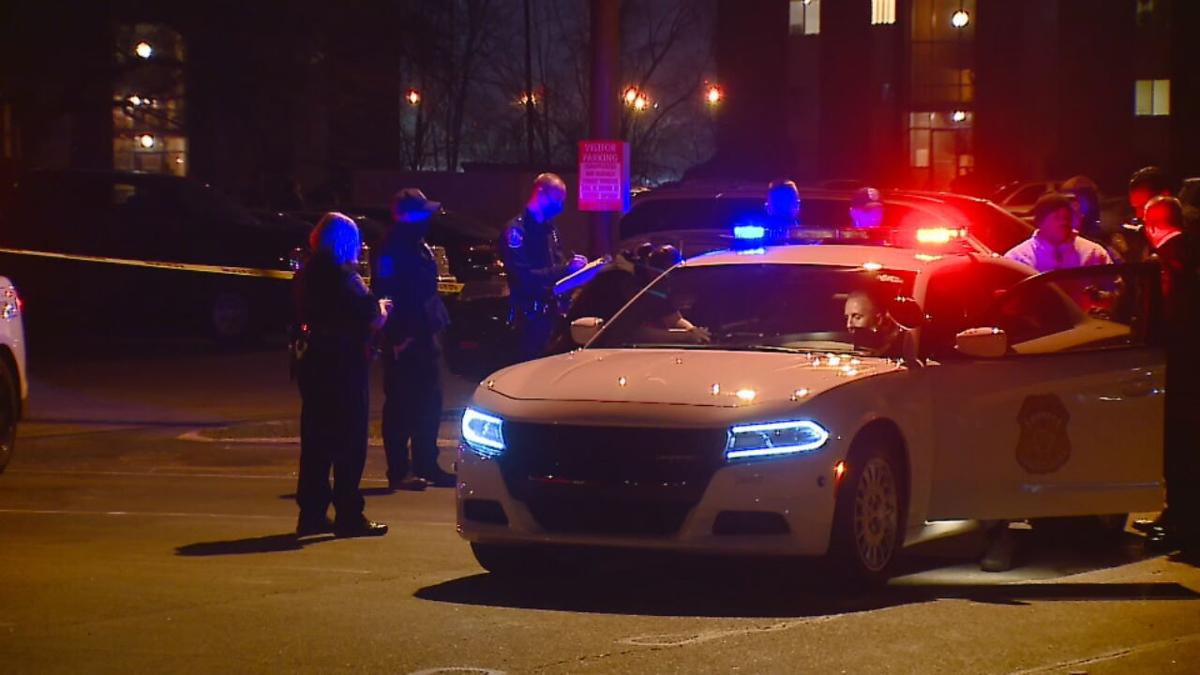Her family said Jeanettrius Moore worked hard at a beauty supply shop to support herself and two little girls and appreciated the most recent $1,400 stimulus check issued to help Americans recover from the COVID-19 pandemic.
The father of her youngest baby, Malik Halfacre, thought he should get half, according to Moore’s relatives.
“He wanted some of Jeanettrius’ tax money, stimulus money,” said Wendy Johnson, a cousin who heard Jeanettrius’ account of what led up to a quadruple murder at an Indianapolis home Saturday night.
Johnson said she was told that the day before the shooting Halfacre told Moore “he wanted half of her money.”
“She said, ‘No, you don’t deserve any of this. I work I take care of our child. You don’t do anything,’” Johnson recalled.
After he insisted, Johnson said Moore relented, offering $450 – but that wasn’t enough. Johnson said Halfacre vowed to “get that money.”
Johnson was told that on Saturday evening, Moore was outside at the curb looking after her car when Halfacre walked up.
“She said he gave her an evil look and walked off,” said Johnson. “He came back.”
Police said after Halfacre came back for a second time, four people were dead, the mother of his child was wounded, the baby was missing, and the ex-con was on the run.
The family identified the dead as Moore’s 7-year-old daughter, Eve Moore, her brother, 23-year-old Daquan Moore, her mother, 44-year-old Tomeeka Brown, and her cousin, 35-year-old Anthony Johnson.
Domestic Violence
Domestic violence (also named domestic abuse or family violence) is violence or other abuse in a domestic setting, such as in marriage or cohabitation. Domestic violence is often used as a synonym for intimate partner violence, which is committed by one of the people in an intimate relationship against the other person, and can take place in heterosexual or same-sex relationships, or between former spouses or partners. In its broadest sense, domestic violence also involves violence against children, teenagers, parents, or the elderly. It takes multiple forms, including physical, verbal, emotional, economic, religious, reproductive, and sexual abuse, which can range from subtle, coercive forms to marital rape and to violent physical abuse such as choking, beating, female genital mutilation, and acid throwing that results in disfigurement or death. Domestic murders include stoning, bride burning, honor killing, and dowry death (which sometimes involve non-cohabitating family members).
Globally, the victims of domestic violence are overwhelmingly women, and women tend to experience more severe forms of violence. They are also likelier than men to use intimate partner violence in self-defense. In some countries, domestic violence may be seen as justified or legally permitted, particularly in cases of actual or suspected infidelity on the part of the woman. Research has established that there exists a direct and significant correlation between a country’s level of gender equality and rates of domestic violence, where countries with less gender equality experience higher rates of domestic violence. Domestic violence is among the most underreported crimes worldwide for both men and women. Due to social stigmas regarding male victimization, men who are victims of domestic violence face an increased likelihood of being overlooked by healthcare providers.
Domestic violence often occurs when the abuser believes that abuse is an entitlement, acceptable, justified, or unlikely to be reported. It may produce an intergenerational cycle of violence in children and other family members, who may feel that such violence is acceptable or condoned. Many people do not recognize themselves as abusers or victims because they may consider their experiences as family conflicts that got out of control. Awareness, perception, definition and documentation of domestic violence differs widely from country to country. Domestic violence often happens in the context of forced or child marriage.
In abusive relationships, there may be a cycle of abuse during which tensions rise and an act of violence is committed, followed by a period of reconciliation and calm. The victims may be trapped in domestically violent situations through isolation, power and control, traumatic bonding to the abuser, cultural acceptance, lack of financial resources, fear, shame, or to protect children. As a result of abuse, victims may experience physical disabilities, dysregulated aggression, chronic health problems, mental illness, limited finances, and a poor ability to create healthy relationships. Victims may experience severe psychological disorders, such as posttraumatic stress disorder. Children who live in a household with violence often show psychological problems from an early age, such as avoidance, hypervigilance to threats, and dysregulated aggression which may contribute to vicarious traumatization.
Statistics
- On average, nearly 20 people per minute are physically abused by an intimate partner in the United States. During one year, this equates to more than 10 million women and men.
- 1 in 4 women and 1 in 9 men experience severe intimate partner physical violence, intimate partner contact sexual violence, and/or intimate partner stalking with impacts such as injury, fearfulness, post-traumatic stress disorder, use of victim services, contraction of sexually transmitted diseases, etc.










More Stories
Black Chicago Activists Blast Mayor Brandon Johnson for “Replacing” Them With Migrants
Migrants desperately digging through trash bins for food as they live out of buses in Chicago
‘Sh-t thing to say’: Tempers flare among House Dems over the Israel war